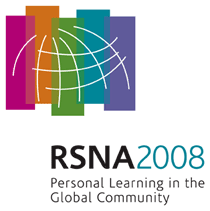
Abstract Archives of the RSNA, 2008
LL-VI4245-H09
New Cannulation Technique for Patients with Technical Failure with a Conventional Technique to Treat Biliary Strictures after Living Donor Liver Transplantation
Scientific Posters
Presented on December 2, 2008
Presented as part of LL-VI-H: Vascular/Interventional
Jin Hyoung Kim MD, Presenter: Nothing to Disclose
Gi-Young Ko MD, Abstract Co-Author: Nothing to Disclose
Kyu-Bo Sung MD, Abstract Co-Author: Nothing to Disclose
Hyun-Ki Yoon, Abstract Co-Author: Nothing to Disclose
Dong Il Gwon MD, Abstract Co-Author: Nothing to Disclose
Kyung Rae Kim, Abstract Co-Author: Nothing to Disclose
Jae Moung Lee MD, Abstract Co-Author: Nothing to Disclose
et al, Abstract Co-Author: Nothing to Disclose
Most of clinical failure for the treatment of biliary strictures after living donor liver transplantation (LDLT) is due to the cannulation failure of the strictures. The present study assessed the clinical efficacy of new cannulation technique for patients with technical failure with a conventional technique to treat biliary strictures after LDLT.
From 1997 to 2005, 293 (27%) of 1081 patients who had undergone LDLT underwent percutaneous transhepatic biliary drainage and subsequent balloon dilation to treat biliary strictures. The failure by conventional cannulation technique occurred in 19 (6%) of 293 patients. The clinical efficacy of new methods to manage the technical failure were evaluated.
Strictures were successfully cannulated using microcatheter set with or without snare in 8 of 19 patients, an assistance of endoscopic approach with snare in 5 patients, and both microcatheter set under endoscopic guidance in 3 patients. The cannulation of the stricture failed finally in the remaining three patients. All 16 patients with successful cannulation with new techniques showed improved symptoms with normalized biochemical data after balloon dilation (median: 8 times) to treat biliary stricture during the dwelling period of PTBD catheter (median, 15 months). PTBD catheter was removed after healing of stricture in 13 (81%) of 16 patients and 12 of 13 patients experienced no recurrence during the median follow-up period of 10.5 months after PTBD catheter removal.
Most of technical failure by conventional technique for cannulation of biliary stricture after LDLT can be overcomed using microcatheter set, endoscopic guidance, or both two techniques.
New cannulation technique to cannulate severe biliary strictures after LDLT can be effectively used in patients in whom the conventional technique failed.
Kim, J,
Ko, G,
Sung, K,
Yoon, H,
Gwon, D,
Kim, K,
Lee, J,
et al, ,
New Cannulation Technique for Patients with Technical Failure with a Conventional Technique to Treat Biliary Strictures after Living Donor Liver Transplantation. Radiological Society of North America 2008 Scientific Assembly and Annual Meeting, February 18 - February 20, 2008 ,Chicago IL.
http://archive.rsna.org/2008/6013231.html

